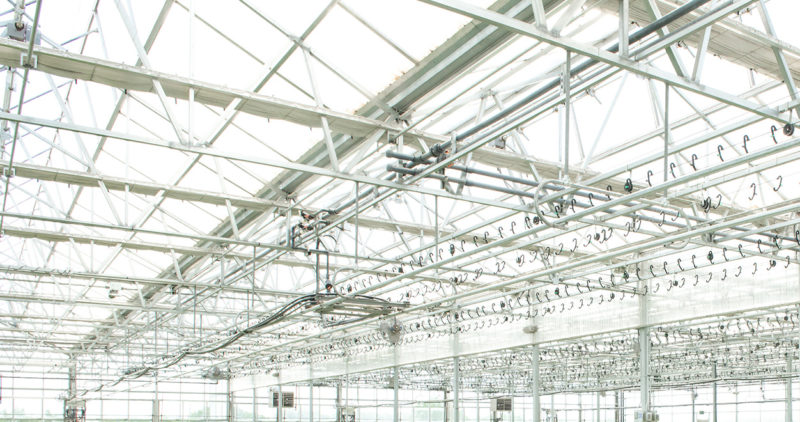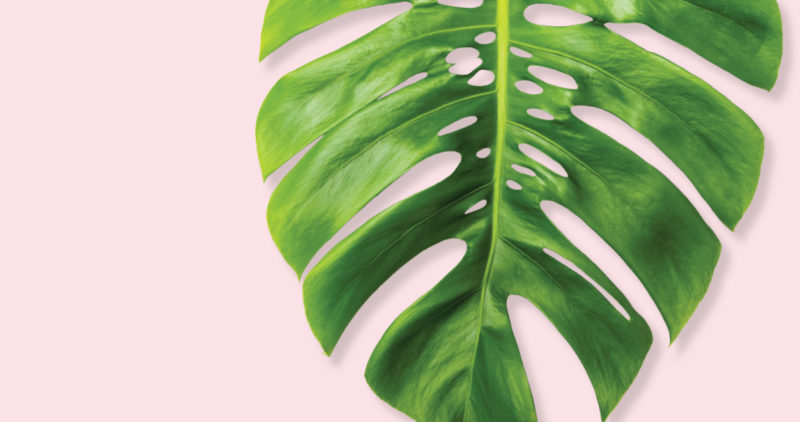
Plants come in all sizes, and we love them whether large or small. But, there’s something special about a big plant, one whose presence grabs your attention the minute you enter the room. Big plants make big statements that can’t be ignored, and their living greenery provides many benefits both as a design element and as a calming, natural influence. Plants find their way into our lives under many different, sometimes unexpected circumstances. But, as plant enthusiasts ourselves, it’s always exciting to help people find ways to incorporate indoor plants into their spaces – in a more thoughtful and intentional way too.
Big plants fill big spaces, both in our rooms and in our minds. They draw our eyes up, lifting our attention toward the upper reaches of a room, and expanding our perception of the room’s size, even in small rooms where you wouldn’t think a big plant should go. And their contribution to the mood and feel of a room can be every bit as important as that of the furniture, rugs, and other design elements in the space. A large body of research on the effects of plants in the home, at school, and in the workplace has shown that the presence of natural greenery into our indoor spaces has a positive effect on our health, productivity, and sense of well-being. Plants of any size can contribute to this positive feeling, but large plants seem to have an even bigger impact on how we experience the space. As an article from ambius.com describes it, large, tree-like plants give off a comforting feeling of shelter and protection to go with the relaxing natural texture and color that their foliage provides. So, we’d like to introduce you to some of our favorite big plants. Whether you have a spot with bright light, low light, tall ceilings, or a difficult corner that could use some brightening, one of these big, beautiful plants might be the perfect fit.

Dracaena
The genus Dracaena offers several species of popular, easy-care houseplants that can grow to heights from three to six feet and even more. Within the genus, you’ll find varying leaf shapes and variegation patterns that make these plants – often referred to as simply ‘dracaenas’ – a favorite of both new and experienced plant owners. Dracaena marginata, or red-edged dracaena, has dense groups of narrow, arching green leaves, edged with red. The leaves grow from the tops of slender stems called canes. Several canes are usually planted in one pot, and depending on how they were cultivated, you might see the canes growing straight, twisted into braids, or trained into interesting curves that continue to develop even more character as the plant grows. In contrast, the species Dracaena fragrans ‘Massangeana’ has thick canes like tree trunks with wide, often striped leaves. This type of Dracaena is often called corn plant because of its leaf shape, but the overall appearance might remind you of a coconut palm. And also in the greenhouse, we have a dracaena called ‘Janet Lind.’ This cultivar has a tall, upright form like the ‘Massangeana,’ but its foliage and canes are both dark green and the canes are thinner. As a group, dracaenas prefer low to medium light and you’ll only need to water when the top inch or so of soil gets dry.
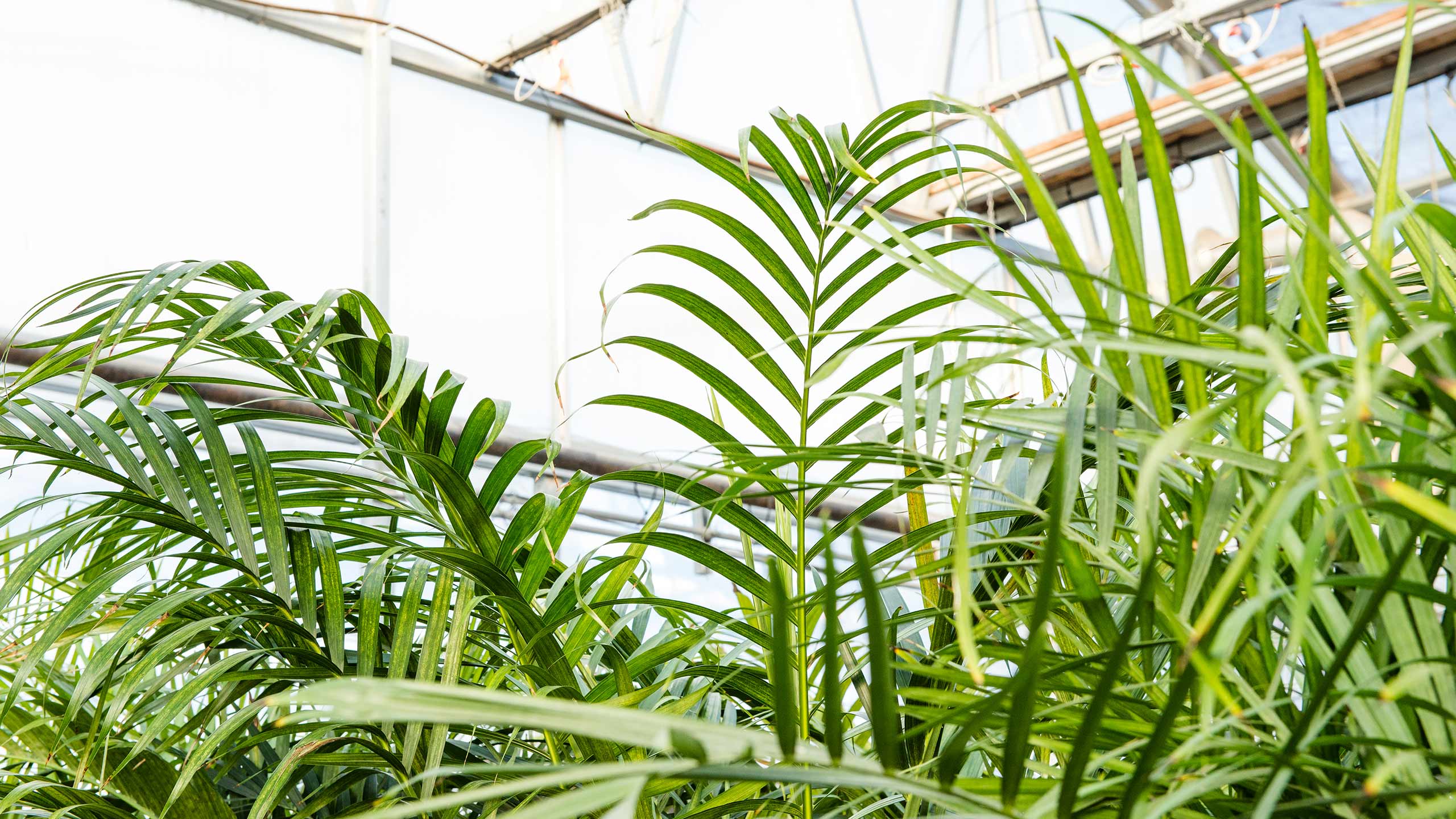
Bamboo Palm
Bamboo palm (Chamaedorea seifritzii) is a full, leafy plant with loads of feathery fronds that emerge both directly from the soil and from slender, bamboo-like canes. Bamboo palms like low to medium light, so they’ll happily bring green life to just about any location, including corners, offices, and other places away from a bright window. This tolerance of lower light sets the bamboo apart from other palms that don’t do as well inside because of their preference for direct sun. Just be sure your bamboo palm has well-draining soil and consistent water – it won’t like to dry out. Otherwise, bamboo palms are easy to care for and will typically grow to heights of four to seven feet indoors.
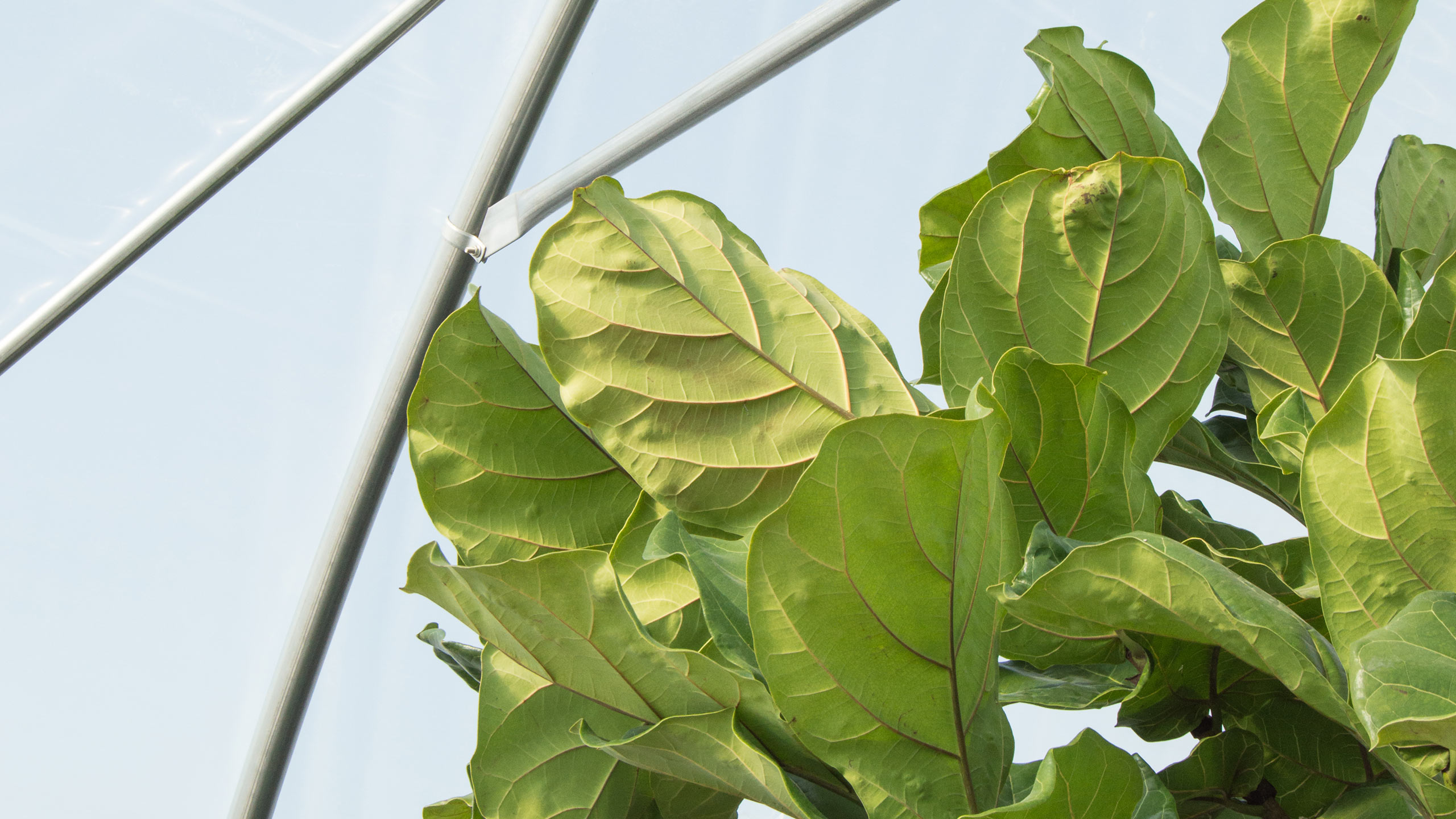
Fiddle Leaf Fig
The fiddle leaf fig (Ficus lyrata) is a handsome plant with large, violin-shaped leaves, often growing on tall, tree-like stems and branches. They can also be found in shrub forms – both large and small. Whatever their shape, these impressive houseplants bring a lot of glossy green texture to a room and can really transform a space. Compared to Dracaena species and bamboo palms, fiddle leaf figs like a bit more light – bright, indirect light is best – without the sun shining directly on their leaves. Like dracaenas, fiddle leaf figs prefer well-draining soil that dries out an inch or two on top before the next watering. Other well-known (and big) Ficus relatives from our greenhouse collection include rubber plant, Ficus elastica, and two cultivars of the classic Ficus binnendijkii tree – ‘Alii’ and ‘Amstel King.’
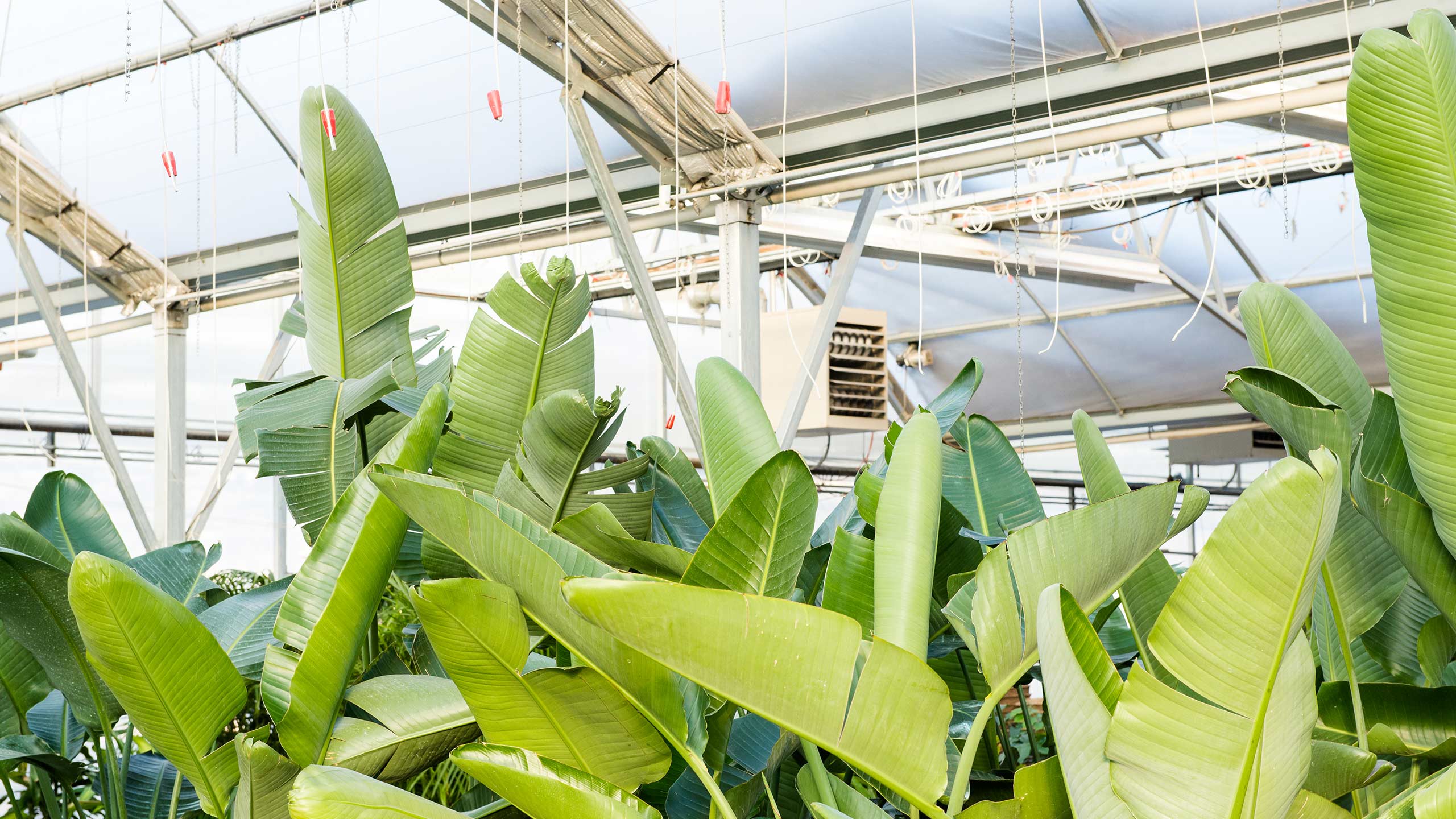
Bird of Paradise
If you have a place with a lot of bright or even direct light in your home, a bird of paradise will love to occupy that space. In the greenhouse, we have Strelitzia nicolai, the white bird of paradise. White birds of paradise have broad, gray-green leaves on tall slender stems that rise directly from rhizomes under the soil. Their soothing cool color, open form, and large leaves give a tropical get-away vibe to whatever room they’re in. They’re fast growers too, with new leaves emerging and unfolding from the center throughout the growing season. Birds of paradise will love to go outside in the summer to enjoy the warmth and humidity in a space with lots of light but protected from the harshest afternoon sun. If you do put your bird outside, keep in mind that stiff winds may dissect the leaves into ribbon-like sections. It’s a natural process the plant uses to protect itself from toppling in tropical winds, but if you want the leaves to stay intact, either place the plant out of the wind or keep it indoors.
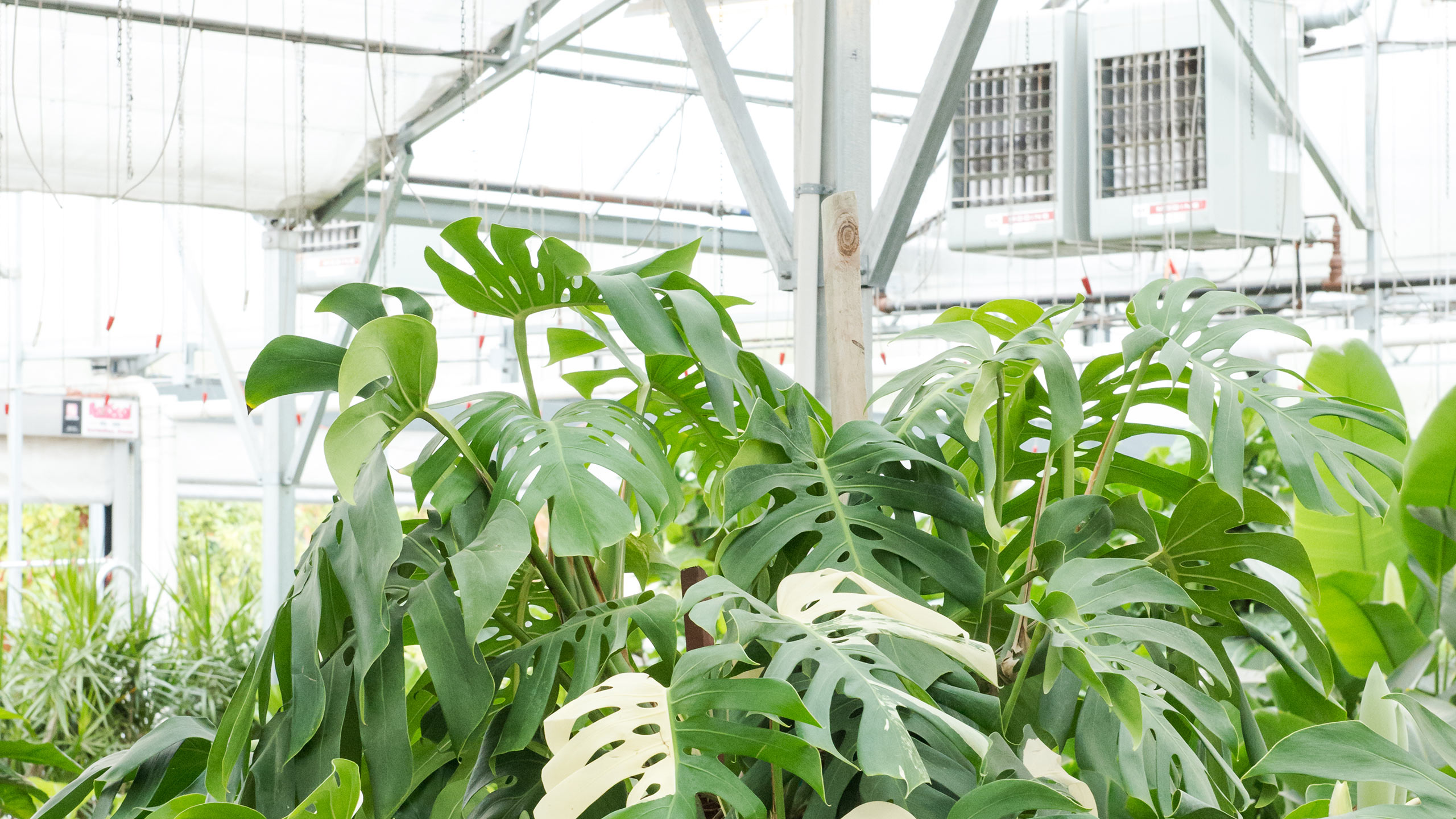
Selloum and Monstera
With plants, big doesn’t always have to mean just tall. Plants can make big statements in horizontal directions too. Philodendron selloum is a beautifully full plant with loads of glossy green, ripple-edged leaves. New leaves continuously sprout from the base as the plant grows vigorously into an expanding, mounding shape. As P. selloum matures, the trunk will get big, and interesting leaf scars will appear as individual leaves drop – although the other leaves will generally drape over and cover most of it. Indoors, they can reach heights and widths of eight feet or more, so they need a lot of space, unless you trim them back from time to time. While P. selloum maintains a relatively symmetrical shape, the split-leaf philodendron, Monstera deliciosa, is another story. In its native habitat, M. deliciosa is an epiphyte, meaning it uses aerial roots to cling and climb on other plants as it reaches for light and moisture. Indoors, this Monstera will continue this adventurous behavior by developing a strange and abstract trunk that grows in sometimes unexpected directions. If your Monstera gets a little too intrusive as it grows, our tropical buyer Jasmine Osten recommends cutting unwanted leaves all the way back to their base on the trunk. With thoughtful trimming, you can encourage your plant to change course and head off in a different direction to explore. M. deliciosa has another fascinating habit. As a small plant, the leaves are whole and heart-shaped, but as the plant matures, new leaves will appear with deep notches called splits. In very old M. deliciosa plants, circular holes will also begin to appear in the new leaves. Both P. selloum and M. deliciosa will tolerate low-light areas, but for more vigorous growth and maximum development of those characteristic splits in the Monstera leaves, bright, indirect light is better.
Every indoor space – even smaller ones – can benefit from the dramatic color, texture, and natural inspiration of a big, beautiful plant. If you’re not sure which one to choose, how to keep it happy, or how big might be too big, just ask one of our team. We’ll be glad to introduce you to one our favorite large plant friends and help you find the perfect match.


